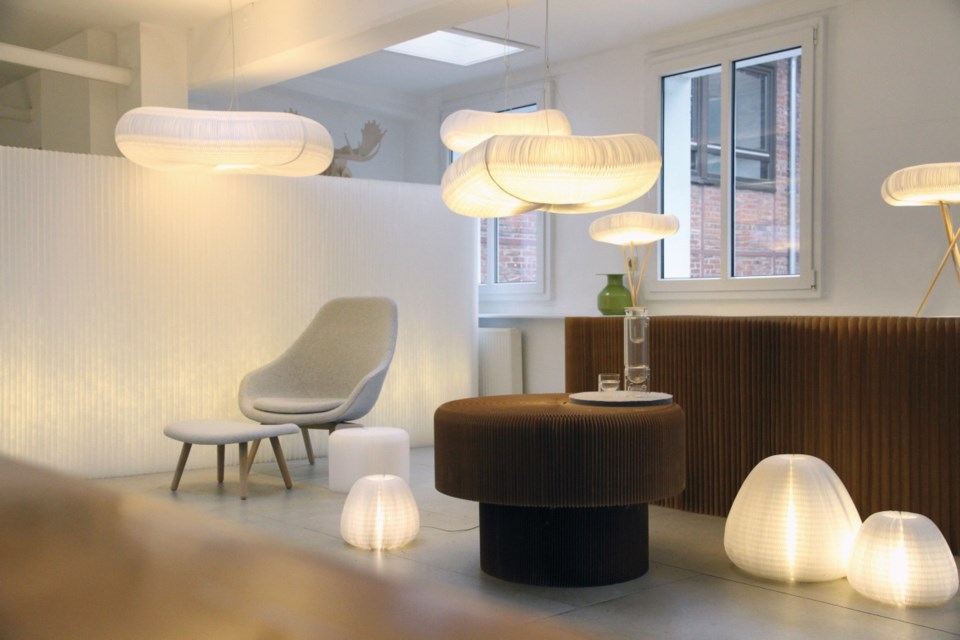We all live 24/7 surrounded by various levels of sounds. There are good sounds, such as friendly voices, music we love, gentle raindrops, the rustle of leaves.
And there is bad noise: road and air traffic, loud machinery and the clatter and din of crowded spaces. I watched a fascinating video by leading sound expert Julian Treasure, The 4 Ways Sound Affects Us, on ted.com.
I think we are all aware of the negative impact that bad noise has on our moods, but it is also a major factor in our physical health and concentration.
Loud and grating outside noises are difficult, if not impossible, for us to control. However, there is much aural clatter that we put up with, or perhaps don’t even think about, inside our homes, clatter that we can control. Sound literally bounces off hard, parallel surfaces.
When you walk across a hardwood floor in shoes with heels, your footsteps reverberate, clickity-clack, clickity-clack.
If you bounce a ball or drop a dish or the kids jump off the sofa, it’s bump, crash, thud. Loud music in a space with no sound insulation or absorption is painful.
So how can we make our homes a little quieter, and thus healthier?
Absorb the sounds by padding the hard surfaces. Hang drapes at the windows and art on the walls. If your preference is bare floors, choose a runner for the hallways and area rugs in the living areas.
The kitchen is filled with hardworking appliances, some with scary motors. (My friend’s three-year-old makes an ungodly squealing sound that terrifies me, and he is simply echoing the coffee grinder.)
Is it time to replace the dishwasher that mimics a jet plane during the rinse cycle? Manufacturers are becoming more cognizant of the importance of quiet washers, dryers, etc. (Not sure what to do about the coffee grinder.)
There are also very clever architects and designers out there whose ingenuity and imagination give us praiseworthy options for the way we furnish our homes and offices.
I spoke with Stephanie Forsythe, who partners with Todd MacAllen in their design company molo, molodesign.com.
They are both architects and were experimenting with paper as a modelling material when they discovered how much strength craft paper had when combined with the honeycomb design.
Their product line, shown here, now includes partitions, seating and lighting, with a clever twist. Their softwall is made of textile paper and is a freestanding, flexible structure that can be expanded and shaped however you choose.
The rounded, multifaceted structure of the honeycomb design absorbs sound and can be positioned to lower noise levels.
The softwall can be lit from within with LED. Stephanie describes molo’s softblocks as paper partition building blocks that stack and attach end-to-end to create seating, tables and low or high walls.
Their award-winning cloud softlights are airy and whimsical, floating overhead or perched on three slender wooden legs. The white textile shades are lit from within with energy-efficient LED, and give off a low-glare light perfect for reading and hand work.
These designs at first appear to suit only office or work spaces, but practical commercial designs have a habit of crossing over into our homes.
The stainless-steel kitchen craze started in restaurants and industrial spaces and gravitated to home kitchens. Industrial-strength carpet squares are now a popular choice for home basements and kids’ playrooms.
Take the time to turn down the noise in your home. You’ll feel better, guaranteed.
��
Debbie Travis’s House to Home column is produced by Debbie Travis and Barbara Dingle. Please email your questions to house2 home @debbietravis.com. You can follow Debbie on Twitter at twitter.com/debbie_travis, and visit Debbie’s website, debbietravis.com.



